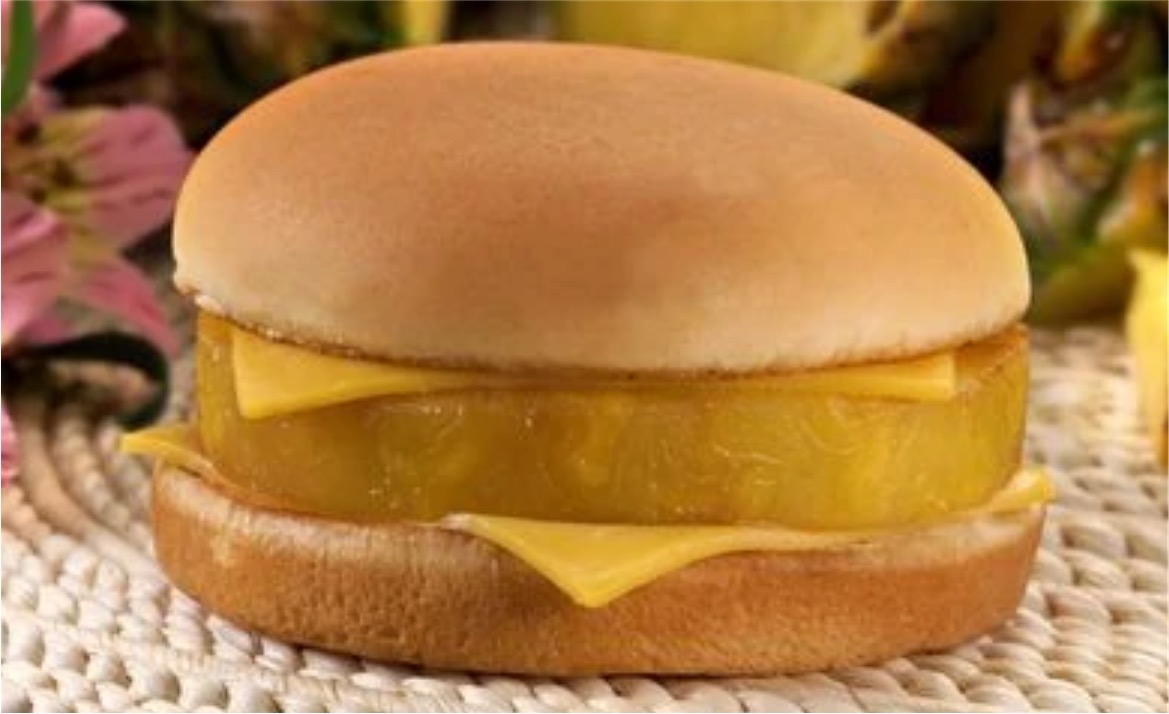Burger King isn’t just another fast-food chain; it’s a brand with a history of quirky and audacious moves. From unique marketing stunts to bizarre spa experiences, here are six of the craziest facts about this global burger giant: 1. Sauna and Burgers in Helsinki: Imagine enjoying a Whopper in a sauna! In 2016, Burger King … Continue reading 6 Wild Tales from the World of Burger King
7 Crunchy Facts That Unwrap the Intriguing History of Taco Bell
Taco Bell, the well-known fast-food chain, has a history that is as colorful as its menu. With its signature concoctions and quirky marketing strategies, the brand has carved a niche for itself in the food industry. Here, we unravel seven fascinating facts about Taco Bell that reveal its adventurous experiments, bold initiatives, and unexpected origins. … Continue reading 7 Crunchy Facts That Unwrap the Intriguing History of Taco Bell
10 Surprising Slices of Facts about Pizza Hut
Pizza Hut, one of the world’s most recognizable pizza chains, has a rich and savory history filled with interesting tidbits. Here are 10 surprising facts that add extra flavor to the story of this renowned pizza brand: Classic Touch: Pizza Hut cherishes its heritage with the existence of “Pizza Hut Classic” restaurants. Endorsed by co-founder … Continue reading 10 Surprising Slices of Facts about Pizza Hut
5 Intriguing Nuggets of KFC History You Probably Didn’t Know
Delve into the intriguing world of KFC, a fast-food giant with an assortment of fascinating stories under its wing. From its unique connection with Japan’s Christmas traditions to the idiosyncrasies of its charismatic founder, Colonel Sanders, KFC’s history is as flavorful as its famous fried chicken. Join us as we explore five finger-lickin’ facts about … Continue reading 5 Intriguing Nuggets of KFC History You Probably Didn’t Know
Iceland’s McDonald’s-Free Landscape
Iceland is a country devoid of McDonald’s restaurants. The fast-food giant ceased operations in Iceland on October 30, 2009, following the 2008-2011 Icelandic financial crisis and elevated import tariffs on foreign ingredients. These factors necessitated a price hike for McDonald’s products, making it difficult to maintain a presence in the country. Interestingly, Icelanders can still […]
The Hula Burger was a meatless burger introduced in the 1960’s by….
The Hula Burger was a meatless burger introduced in the 1960’s by Ray Kroc to McDonald’s. It was a substitute for American Catholics that would not eat meat on Fridays. The burger was a slice of grilled pineapple with cheese on a bun. But this was designed to go up against the Filet-O-Fish, which was […]
The post The Hula Burger was a meatless burger introduced in the 1960’s by…. appeared first on Crazy Facts.
It took Taco Bell food engineers two years…
It took Taco Bell food engineers two years and 40 different recipes to create the Doritos Loco taco. It became so popular that it led to Taco Bell adding 15,000 jobs, propelling the company to outgrow Pizza Hut, KFC and even McDonald’s.
The post It took Taco Bell food engineers two years… appeared first on Crazy Facts.
Subway’s parent company is called…
Subway’s parent company is called Doctor’s Associates Inc. because co-founders Peter Buck has a Ph.D. in nuclear physics and Fred DeLuca, who was 17, hoped to become a medical doctor.
The post Subway’s parent company is called… appeared first on Crazy Facts.
In 2004 McDonald’s introduced “adult…
In 2004 McDonald’s introduced “adult Happy Meal”, which was positioned as a healthy choice, and included a salad, a fitness DVD, and a pedometer. The sales flopped and it was killed off after a few weeks.
The post In 2004 McDonald’s introduced “adult… appeared first on Crazy Facts.
An ER Doctor Went Viral for Pointing Out That Fast Food Is All Some People Can Afford
There’s no question that everything, including food, keeps getting more and more expensive.
Add in a food desert, and people are paying crazy prices for fresh food the rest of us take for granted.
So when a doctor tweeted about the relative costs of fast food compared to fresh food, her thread went viral, with lots of people weighing in on both sides.
Emily Porter is an ER doctor and cancer survivor living in Austin, Texas.
When she tweeted about the cost of food, she was urging empathy and asking people not to judge others, but she had to know it was going to be controversial:
I just got a double cheeseburger, small fries and large Diet Coke at McDonald’s for $3.25 so please stop fat shaming or blaming the single mom of 2 working for $7.25/hour for her “unhealthy choices” or high blood pressure when non-organic raspberries are $8.96/pound at Walmart.
— Emily Porter, M.D. (@dremilyportermd) April 14, 2021
A lot of Twitter users doubted that a medical doctor would eat McDonald’s for lunch, as though they don’t rack up thousands in debt from medical school, and as though they don’t crave fast food like other humans.
But Dr. Porter took the time to explain her background:
People acting like I didn’t pay $3.25 for lunch or lie about raspberries forget that I grew up dirt poor on a farm, my sister shops on double coupon day, & I do my own grocery shopping. McDonald’s has “$3 bundles,” a $1/$2/$3 deals, & an app with freebies. 56 cents/oz is $8.96. pic.twitter.com/BUbQzfdNW2
— Emily Porter, M.D. (@dremilyportermd) April 15, 2021
Not only did she grow up poor, but she worked on the front lines of poverty, watching others in her community purchase what they could afford at a fast food restaurant.
I’ll also say I worked in fast food. When you see someone destitute finally get enough spare change together to buy a hamburger and then they ask for a big cup of hot water and grab a huge handful of ketchup, you learn quickly what is happening. Heartbreaking, even as a teenager.
— Emily Porter, M.D. (@dremilyportermd) April 15, 2021
She even took the time to explain the food desert in her area, and the fact that people basically only shop at the dollar store.
Just outside Austin is a food desert. The closest supermarket is 15 mi away. Not everyone has a car. 95% of kids in the school district get free lunch. The people buy groceries at Dollar General. They accept SNAP and it’s the only option. What fresh/healthy food comes from there?
— Emily Porter, M.D. (@dremilyportermd) April 15, 2021
The responses to her tweet ran the gamut. Some came with empathy and agreement, others did not.
Apparently some even suggested that the poor should invest in Blue Apron meals, which surprised me, because meal kits tend to be pricey. They definitely cost more than McDonald’s.
Here was Dr. Porter’s response:
Also, for anyone who would snub a poor person for cooking frozen pizza or making a box of mac & cheese, try working 10 hr then cooking Blue Apron which is delivered to your door but takes at least an hour to prep/cook & leaves tons of dishes to hand wash then decide they’re lazy.
— Emily Porter, M.D. (@dremilyportermd) April 15, 2021
But that is the point of such a tweet–starting a conversation that needs to be had.
Some people argued that fast food eaters were lazy:
I can’t agree with that: all studies show that cooking your own meals costs much less than fast food for working class families and is much healthier. You should shame them for their culinary laziness.
— Hank Ersazt (@therealguiga) April 14, 2021
To which others replied, it’s not just about the money. It’s about the cost of time and labor too.
Preparing healthy food requires money, transportation, time, mental energy, childcare support, cooking knowledge and skills, access to a functioning kitchen and tools, and kids who are willing to eat whatever you make. Not impossible for a family, but often not easy.
— Yvonne Choong (@Choonghagen) April 14, 2021
Some people even argued that the poor should buy a rotisserie chicken at Sam’s Club or Costco.
Few pointed out that those are loaded with sodium, but some people did point out the absolute tone-deafness of such a suggestion.
You have to be able to afford a membership to Costco or Sam’s and have the transportation to get there.Most of them are suburban and therefore aren’t on bus lines.
— Whistling in the Dark (@RuthlessLogic) April 14, 2021
Bored Panda said that a major argument, that cooking healthy food is cheaper, isn’t necessarily true.
And unlike Twitter users, they brought the receipts:
According to the results of a meta-analysis published in 2013 in BMJ Open, a healthier diet costs $1.48 more a day, which would add up to $540.20 a year, and for a family of four, the amount would equal to $2,160.80.
The article did note that a UK study disagrees with this assessment, so maybe it’s regional. The UK is very different from the US in a lot of ways, maybe it would generally be less expensive to eat healthier in the UK and not in the US.
A lot of people suggested eating beans.
Many users, however, completely agreed with Dr. Porter’s assessment of the cost of eating.
My grocery bill has gone up triple since I stopped buying easy food and started eating healthy. And I buy less because I eat less, but the fact remains I spend far more money. It’s ridiculous.
— MiGa83 (@Ga83Mi) April 14, 2021
And they pointed out a lot of things that it’s easy to overlook from a privileged point-of-view.
Like the cost of time…
I think many people forget there is a time cost in shopping for ‘raw’ food – they don’t have transportation, storage, lack of childcare. Maybe working 2 jobs and don’t have time to do a ‘good’ shop.
The problem isn’t fast food. The problem is bad societal infrastructure.
— tim a (@babbles) April 14, 2021
…the fact that just because something is possible, doesn’t mean everyone has the ability to make it work…
THEREs A DIF BETWEEN BEING BROKE AND BROKEN! There are poor ppl;then there r those who’re devoid of hope. Without hope it’s hard as hell to try and keep trying. Think about what you just said – “I was a vegan collage student.” At least you had hope for a brighter future.
— Wingfield Report (@wingfieldreport) April 15, 2021
…and the simple fact that fast food is easier to chew than, say, a carrot.
Don’t forget the unbelievable cost of dental care and that all this McFood is soft making it possible people with dental problems and missing teeth can still eat.
— DameAme (@AmeMaly) April 15, 2021
It’s safe to say that there are no easy answers to this question, but one thing is for sure: it’s a frustrating situation that needs to improve.
What do you think? Does Dr. Porter have a point? Is this system set up to be broken? Let us know in the comments.
The post An ER Doctor Went Viral for Pointing Out That Fast Food Is All Some People Can Afford appeared first on UberFacts.





